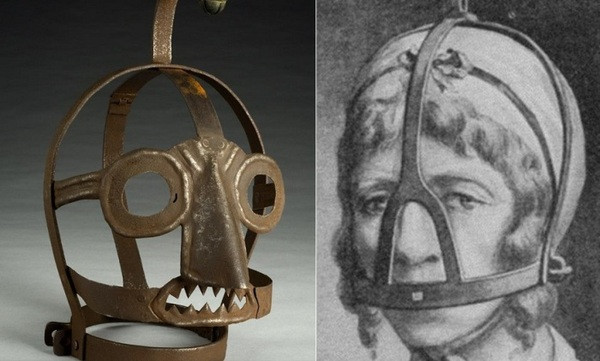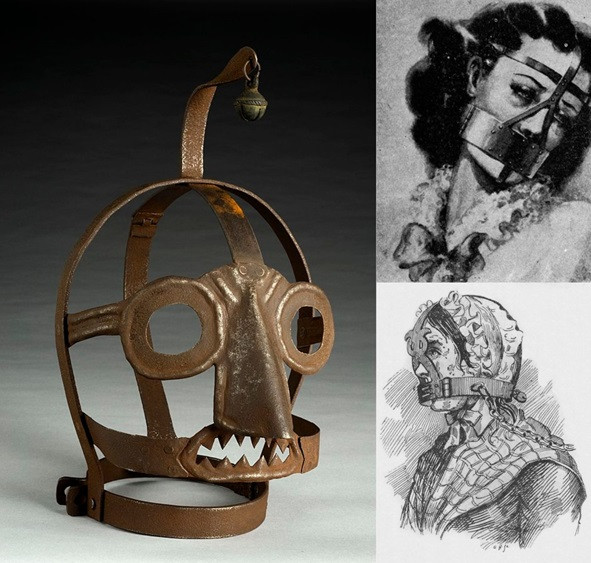In the annals of history, few devices evoke as much horror and revulsion as the German scold’s bridle. This sinister contraption, which emerged in the mid-16th century, was designed to punish and silence the outspoken, primarily targeting women accused of “gossiping” or “nagging.” The scold’s bridle, also known as the “branks” in Britain, was a tool of oppression, reflecting a culture intent on suppressing those who dared to challenge societal norms.
The Origins and Spread of the Scold’s Bridle

The scold’s bridle first appeared in the mid-16th century in Germany, quickly spreading across Northern Europe, including Britain. This cruel device, featuring a large nose-piece, jagged mouth, hinged neck ring, and a suspended bell, was intended to humiliate and control its wearers.
While the scold’s bridle was primarily used on women, evidence suggests that men were not exempt from this brutal treatment. The device’s purpose went beyond mere humiliation; it was a tool to physically prevent speech, reflecting a culture that sought to silence those who disrupted the social order.
Defining the “Scold”
In legal terms, a “scold” was anyone deemed to have disturbed the peace through their speech – be it through quarreling, drunkenness, or slander. The bridle’s purpose was to enforce silence, reflecting a society that was intolerant of dissent and unwilling to hear the voices of those it deemed troublemakers.

Gender Disparities in Punishment
The scold’s bridle highlighted the stark gender disparities in public shaming practices. While men were often sent to the stocks or pillories, women endured the added indignity of being paraded in ornate masks, sometimes adorned with animal features to further their degradation. The attached bell ensured that the wearer’s shame would be heard as well as seen.
The Bridle’s Design

Most scold’s bridles included gags, some featuring spikes, to restrain the tongue and enforce silence. The example acquired for Sir Henry Wellcome’s museum collection in 1935 serves as a chilling reminder of this practice, a physical manifestation of the lengths society once went to suppress dissenting voices.
A Fading but Persistent Practice
While records of the scold’s bridle’s usage are scarce, possibly due to its status as an illegal form of torture in England, reports of its use persisted until the mid-19th century. This dark chapter in history serves as a stark reminder of the lengths society once went to suppress dissenting voices, particularly those of women.

Conclusion
The scold’s bridle stands as a disturbing symbol of the oppression and silencing of marginalized voices throughout history. Its legacy reminds us of the importance of championing free speech, challenging societal norms, and ensuring that all individuals have the right to express themselves without fear of punishment or humiliation. As we reflect on this dark chapter, we must recommit ourselves to building a more just and equitable world, where the voices of the marginalized are heard and respected.
